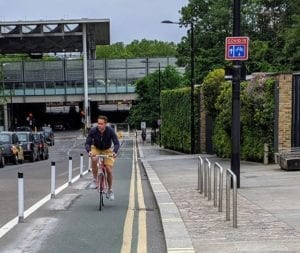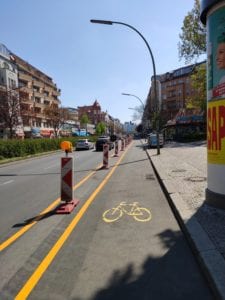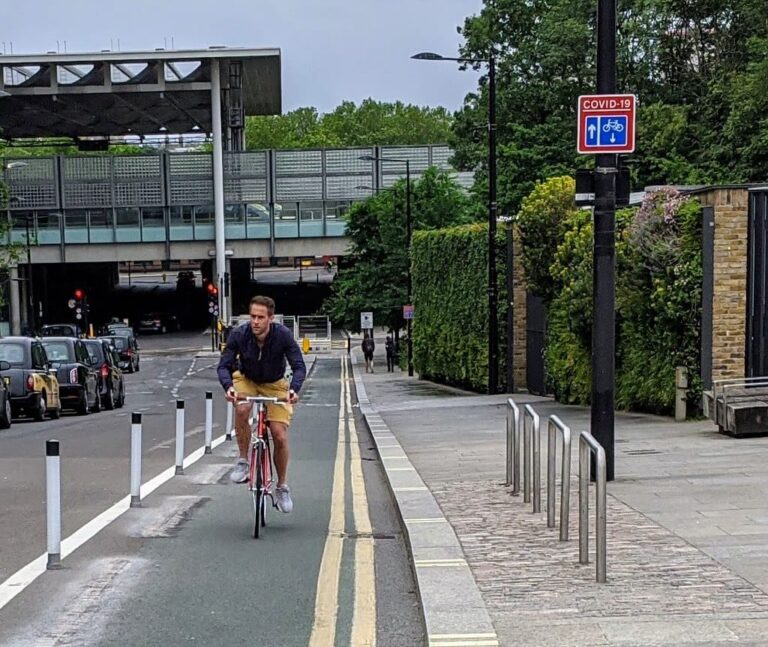With cities everywhere implementing measures to re-configure their streets to encourage safer active travel and social distancing, authorities mustn’t forget about the danger from the vehicular traffic walkers and cyclists are sharing the roads, warns Anusha Rajasooriya, safety consultant at TRL.
As we have navigated our way through the Covid-19 pandemic, we have spent several months living with significant restrictions on daily life. The impact of this has perhaps been most clear on transport, which changed dramatically almost overnight. With more people working from home than ever before, alongside a significant proportion who remain on the move but are avoiding public transport, there has been a significant increase in pedestrians and cyclists, or ‘active commuters’, in our towns and cities.
There are important questions around how we can guarantee the safety of such road users. We must address pre-existing concerns such as minimising the risk of traffic collisions between motorised vehicles and people on bike and foot, whilst also considering the implications of continued rules on social distancing, which are unlikely to be removed in the near future.
In many areas, existing infrastructure has proven insufficient with an increased number of users sharing footpaths and cycle lanes that are often less than 2m in width. In response, cities and municipalities around the world are temporarily widening these facilities to cater for the increased number of pedestrians and cyclists. Examples of such ‘pop-up’ solutions include inexpensive and removable road marking tape to create new, or widen existing, bike lanes, and the use of flexible posts to create safer segregated areas.

By widening active transport routes, authorities are helping to enable the public to safely adhere to social distancing advice without the need to encroach onto road space that is dominated by cars, vans and other motorised traffic.
Cities across the world and within the UK are currently implementing measures to re-configure their streets to encourage safer active travel and social distancing.
Though wider lanes provide users with sufficient room to keep 2m apart, there remains a danger from the vehicular traffic they are in part sharing the roads with. Whilst the lockdown has triggered a drastic reduction in road traffic, the quieter roads have been subject to increased speeding. ‘Pop-up’ walking and cycling facilities can be of benefit here by acting as a traffic calming intervention and encouraging lower traffic speeds – and with lower speeds comes lower risks of collision.

Research has shown the merits of using narrower lanes in reducing vehicle speeds, and this is a common traffic management strategy implemented on roadworks schemes across the UK. With the growing implementation of ‘pop-up’ facilities in our cities, local authorities can evaluate the potential long-term benefits of improved infrastructure for both walking and cycling, should it prove successful in lowering average speeds.
Long-term considerations such as this are where our focus should be. Almost instantly, the British public dug out their trainers and dusted off their bikes as part of an enforced re-think of how we move around. If the appropriate infrastructure is provided for people to walk and cycle safely, and they have a positive experience whilst doing so, then these active commuters will be more likely to stick to such transport habits post-lockdown and beyond.

If we can spark and sustain this behavioural change, cities will reap positive long-term impacts in mitigating the effects of traffic congestion and climate change. Indeed, encouraging active travel is key to meeting emissions targets and lowering single occupant car trips that might otherwise increase in the future if individuals continue to avoid public transport.
Of course, encouraging long-term adoption of active transport also has significant benefits for public health. An active lifestyle reduces our individual risk of developing obesity, heart disease and other underlying conditions that have been proven to increase susceptibility to a severe or fatal attack from Covid-19. Though we have come through the peak of the pandemic, we must continue to minimise the strain on our NHS and, in the absence of a vaccine, active travel is a useful tool to achieve this.
Though we face challenging times, we also have an opportunity to ensure increased active commuters become a permanent fixture in our day-to-day lives. To achieve this, the safety of these more vulnerable road users must be guaranteed.
‘Pop-up’ walking and cycling facilities allow local authorities to achieve ‘quick wins’ in this effort and may also support long-term strategies to combat traffic congestion, improve public health and care for the environment. They also allow local authorities to balance the needs of all road users without compromising road safety or traffic flow.
As we begin to embrace a ‘new normal’, few industries are facing a revolution as major as transport. Now is our chance to re-think our transport choices, re-configure our transport facilities, and re-imagine active transport post-Covid-19.





